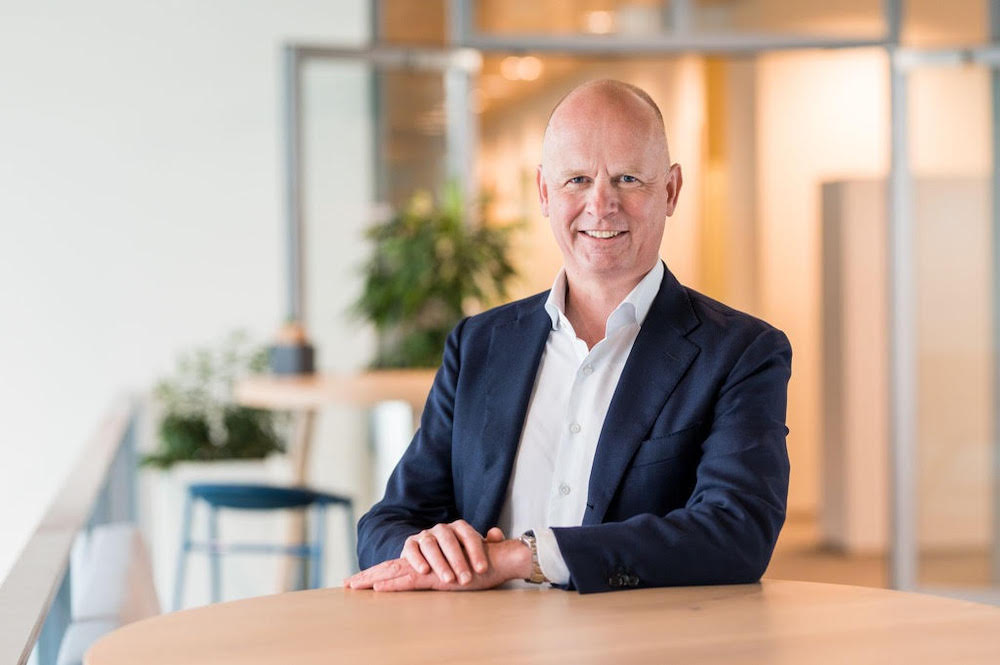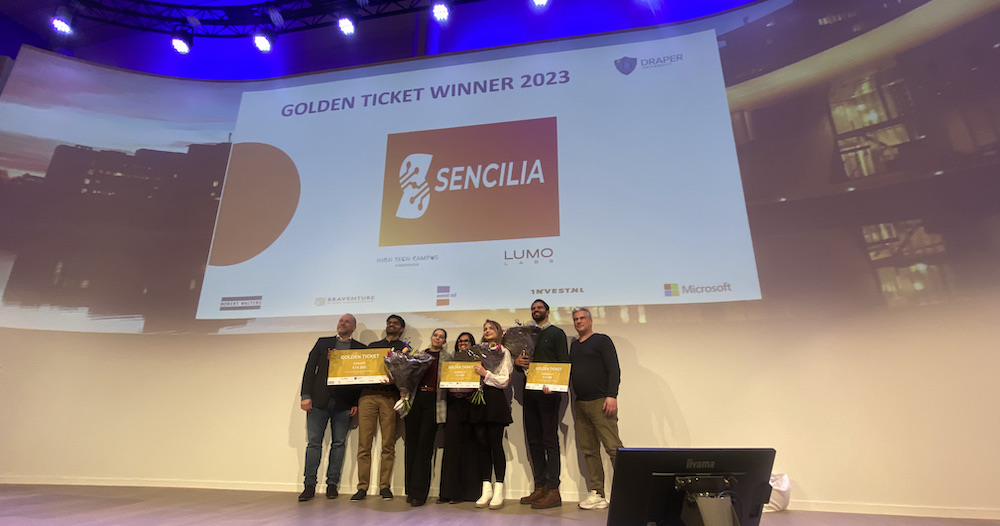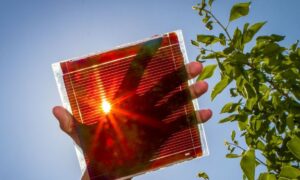It was another action-packed week in Eindhoven, with big events and bigger developments as the ecosystem expands. Last Thursday’s Draper’s Silicon Spring Pitch Prize competition came with a surprise – a new working relationship between Silicon Valley and Eindhoven. For three years, Silicon Valley-based Draper University and LUMO Labs have partnered on pitching events for Dutch startups. Now, Draper plans to put its European startup hub on High Tech Campus Eindhoven, said Khadija Ghazi, Draper’s head of partnerships and business development.
Draper, based in San Mateo, Calif., plans to make Eindhoven its European hub, and its first hub outside the United States.
The goal is “to build a strong pipeline” from Europe to Draper, Ghazi said. “What we want to do is create a hub for Europe here, then bridge it to Silicon Valley so whatever innovation is happening over here, Silicon Valley can have access to it, and the Eindhoven ecosystem can have access to The Valley.”
So, if you have a startup in Stockholm or Munich, you’d connect to Eindhoven, she said. “You have to build a strong local ecosystem.”
At this point, Draper officials are still working out the details, including where Draper operations will be on High Tech Campus Eindhoven and funding for the project, including government grants with a goal of establishing the hub this year.
Draper was founded in 2012 by American billionaire Tim Draper. Draper University is a private, for-profit school/incubator/accelerator located in San Mateo, Calif. and focused on entrepreneurship. Its early stage startups have raised more than $400 million. Affiliated entrepreneurs include VC and founder Tim Draper, his brother Bill, who’s also a VC, Elon Musk and John Zimmer, founder of Lyft.
“At LUMO, we want to create an innovative, emerging and disruptive soft-tech ecosystem alongside the maker community and the deep-tech efforts,” said Andy Lürling, LUMO Labs Founding Partner. A Draper hub on High Tech Campus Eindhoven will help build a more diverse and healthier ecosystem for the entire Netherlands, Lürling said.
Through the Draper pitch events, the Netherlands has sent eight teams to Draper in two years, and now three in the third year to the Draper University Hero Training, and the feedback has been overwhelmingly positive: “We have a good relationship with Draper. They’ve had a positive impact on the startups,” Lürling said. (Not all the teams have been from LUMO Labs. Teams from other venture builders, including HighTechXL, have won Draper scholarships.)
The reality is, not everyone can take five weeks to go to Silicon Valley. Bringing Draper to Europe will help solve that problem, Lürling added

FasTrackathon
HighTechXL had the third FasTrackathon last Friday in HTC 27, and it drew 75 people, a mix of tech types – engineers, physicists and developers – along with people with soft skills, exploring seven technologies.
The venture builder/accelerator’s reverse hackathon brings together aspiring entrepreneurs with technologies from advanced research centers such as CERN. You can see the details about the seven technologies below.
HighTechXL Program Director Robin van Scheijndel opened the event with some instructions:
• No idea is too crazy
• Give positive feedback
• Respect all perspectives
• Have fun!
It didn’t take long for emerging teams to get down to work, with one moderator leading the conversations. To non-technical types, participants seemed to be speaking a baffling scientific language all their own, which they kind of were.
And that can be an issue, said Boudewijn Docter, HighTechXL’s chief growth officer. Docter noticed some of the participants with the strongest tech backgrounds were having the most difficult time breaking out of conventional thinking and rigid rules and letting imaginations run wild. “A lot of the engineers were asking, ‘What are the parameters?'” Docter said. The answer? There aren’t any, which the non-engineers were fine with, he said. Which is why deep-tech teams need both.
It was new CTO Earl Goetheer’s first FasTrackathon since he joined HighTechXL last November from research center TNO. “I have to say it was so refreshing to see how people can so quickly start being creative, even with strangers.”
And they were creative. Ideas ranged from using bio-photonics for detecting disease breakouts on cruise ships to using polymer sand technology to quickly and cheaply build emergency housing for disasters such as the Turkey/Syria earthquake.
The event ended with pitches, and the two bio-photonics team tied with the most audience votes. Over the next few days, teams will consider if they want to move forward with the projects.
From the FasTrackathon LinkedIn post:
• 100s of stickie notes
• 75 people
• 11 teams
• 7 technologies
• 1 amazing day of innovation
Friday’s FasTrackathon was among the best we’ve ever held. The office was positively buzzing with excitement as 11 teams spent the afternoon brainstorming application areas and business ideas to take 7 advanced technologies to market. 🐝
This is venture-building in the making. 🚀
We scout deep tech from research institutes and tech companies across the globe. We present them at FasTrackathon, where attendees can be an entrepreneur for the day OR take the leap and co-found a deep-tech venture. Either way, they want to make a social impact and solve global challenges.
Teams chose their technologies, came together and completed the Market Opportunity Navigator the first part of the afternoon. Robin van Scheijndel held a 30-minute storytelling workshop, after which teams wrote their pitches they presented at the end of the day.
Everyone got to play investor and use their allotted 1 million (virtual) euros to spend after each pitch.
And the envelope please … 🥁
Both bio-photonics teams “raised” the most capital of all the pitches.
Though FasTrackathon is over, it’s not too late to join a HighTechXL team. Feel free to take the next step on your own venture journey and join a deep-tech venture. Get in touch: [email protected]
Technologies at FasTrackathon:
• Lymphedema Sleeve: Lymphedema patients benefit from pneumatic compression therapy to
increase lymphatic circulation. The Lymphedema Sleeve comes closest to therapeutic sessions
to ensure a solution that is close to manual therapy. Read more about the technology here.
• Microgas Chromatograph: Philips is developing a Micro Gas Chromatography that is reduced to
the size of a match box and enables users without years of lab experience to detect volatile
gases that impact their products, their crops, their animals or themselves for a fraction of the
cost. Read more about the technology here.
• Anti-fouling UVC LED: Biofouling is the formation of microorganisms, plants and other marine
life on a surface in contact with water. This innovative UVC-emitting coating eliminates
biofouling, preventing progressive growth without impact to the structure. Read more about
the technology here.
• Polymer Sand: A reversible material that mixes polymers with sand to create a composite with
similar mechanical properties as concrete but with a much lower carbon footprint. The
composite uses sand, which becomes workable/formable when it absorbs water, opening up a
plethora of use cases. Read more about the technology here.
• Bio-photonics: Highly sensitive and robust integrated photonics chips allow biosensors to be
miniaturized while maintaining the analytical performance levels of larger systems. These
biosensors are easier to implement, increase mobility and offer inexpensive on-site solutions in
non-laboratory and harsh environments. Read more about the technology here.
• Optical Coherence Tomography: OCT technology enables non-invasive, high resolution imaging
of small samples. It enables both two-dimensional and three- dimensional imaging of those samples by using long wavelengths of light. This technology is robust, affordable, scalable and
has a high resolution of the layered surface. Read more about the technology here.
• Ember: This technology uses a liquid metal catalyst. The carbon produced floats to the top and
is washed at high temperatures with a molten salt. This leads to cracking methane to carbon
and hydrogen without CO2 production. Read more about the technology here.

Draper’s Silicon Spring Pitch Prize
Draper business development exec Khadija Ghazi was in Eindhoven for the Draper Silicon Spring Pitch Prize 2023 last Thursday. This was, as noted above, the third pitch event, with the prize a trip to The Valley and five weeks at Draper’s very intense Hero Training.
Seven teams pitched to a jury. The winning team was Groningen-based Sencilia, which has developed an in-line sensor for IV monitoring. Sencilia CEO Amar Kamat gave the pitch, explaining that 60 percent of all IV infusions deliver improper flow rates, a problem that can cause serious complications.
Kamat estimates the value of bringing precision to intravenous infusions at 1 billion euros.
The runner up was Aletta Solutions and Elementa third.
Aletta Solutions solves the problem of participant non-adherence to medical trial protocols, said CEO Fennie van der Graaf. The team from Groningen has built Alva, an AI-enhanced chat agent that converses with patients, encouraging them to comply with trial protocols and provides information about the trial and their symptoms.
Elementa Labs has developed a voice assistant to automate laboratories, including controlling lab equipment with your voice.
All the teams get the “Golden Ticket,” a trip to California and the Draper University program, valued at $14,000.
Here are all the teams that pitched:
• Sencilia
• Elementa Labs
• Aletta Solutions
• SAVR
• ECG Excellence
• SG Papertronics

QUICK HITS
High Tech Campus Eindhoven has just announced a new CEO. Effective 1 May 2023, Otto van den Boogaard has replaced Jan-Willem Neggers, who becomes CEO of the Ramphastos investment fund, the former owner of the campus. Got that? (There will be a quiz.)
Van den Boogaard brings more than 25 years of experience in real estate, with a deep focus on asset management and development, according the HTCE blog announcing the change. You can see the details here.
American asset management giant Oaktree, along with the sovereign fund of Singapore, acquired the campus back in 2021 from Marcel Boekhoorn and Ramphastos. Hermann Dambach now oversees the campus for Oaktree.
––––––––––
(Editor’s note: The Eindhoven Business Briefing is part of our Tech Tuesdays series. We cover the tech scene because so many of our highly skilled internationals are engineers and entrepreneurs.)














